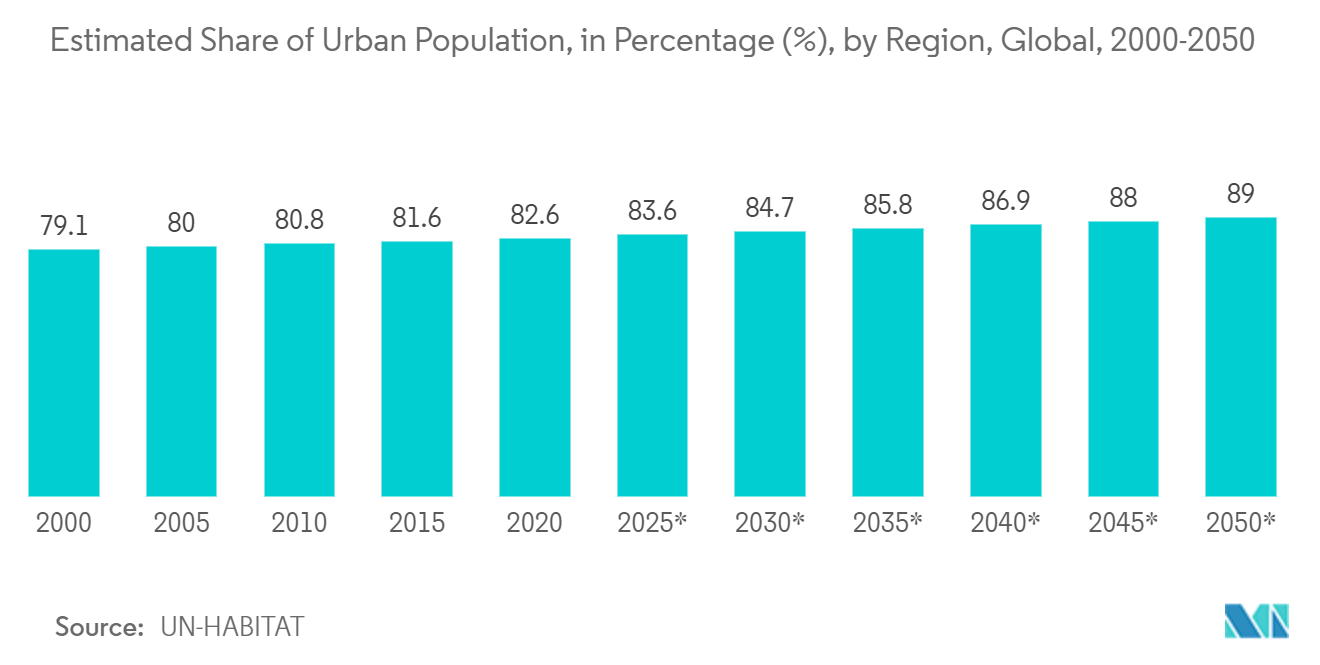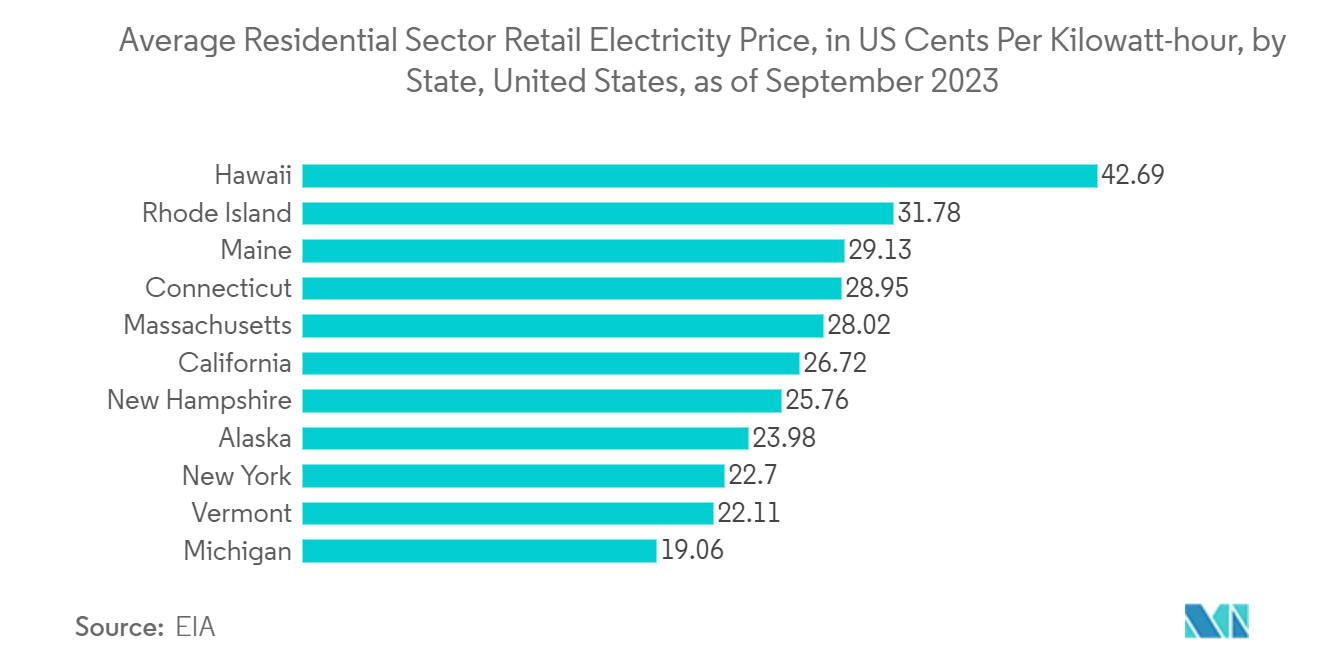Market Trends of North America Home Energy Management System Industry
Hardware Component is Expected to Hold the Major Market Share
- The hardware segment comprises sensors, thermostats, lighting panels, and other EMS components. The hardware of an energy management system comprises sensors and bridges. Energy Monitoring hardware is incorporated with the system, as the system is the energy source, and the devices consume it for operation. The power monitoring unit transmits the collected data into the system.
- EMS allows for continuous home monitoring and provides information on potential opportunities and risks. In addition to reading and controlling space temperatures, EMS thermostats collect data and transmit it to the server and the cloud for use in facility analytics. These analytics allow facility managers to monitor their locations remotely and reduce maintenance costs and energy consumption.
- Wired and wireless sensors such as space temperature, water heaters, and photocell sensors are widely used in the home to monitor data sets. The evolution of IoT sensors further helps market growth as integrating IoT sensors in energy management systems allows us to adjust energy usage automatically based on occupancy, climate conditions, and other factors. According to the US Department of Energy, including IoT sensors in buildings might result in up to 30% energy savings. The advancement in sensing technology further increases the capabilities of the sensors, which will increase its demand in the EMS market.
- Moreover, growing urbanization and the rising shift toward building urban lifestyles drive the expansion of the installation of smart home devices and technologies, which include automatic control of light, electricity, and energy to evade wastage.
- According to UN-HABITAT, 82.6% of the North American population lived in urban areas, this would increase to 89% in the future. Thus, the growing adoption of intelligent solutions such as smart meters, PV batteries, smart sensors, and technologies across homes is further likely to boost segment growth. A lighting control panel is usually installed with the EMS; relays and contactors are inside the control panel. These relays and contactors communicate with the lighting when it is required to be off and on. The advancement in the control panel further drives the segment growth.
- The solar capacity in the United States experienced significant growth over the last decade, encompassing large utility-scale solar farms with a capacity of one megawatt or more, as well as small-scale solar installations. The majority of small-scale solar installations consist of residential rooftop solar panels.

United States is Expected to Hold the Major Market Share
- The increase in residential users and the growing demand for energy efficiency goals, renewable energy integration, cost savings, smart home integration, and environmental concerns are driving the expansion of the country's home energy management system market.
- With the increasing adoption of renewable energy sources like solar panels in residential properties, there is a growing need for home energy management systems to monitor, manage, and optimize energy production and consumption. These systems can help homeowners take full advantage of renewable energy resources and ensure efficient utilization.
- As per the Solar Energy Industries Association, the capacity of utility-scale solar photovoltaic systems reached almost 100 GW of direct current in the United States. Meanwhile, residential solar systems accounted for over 32 GW of direct current.
- Home energy management systems provide homeowners with detailed insights into their energy usage patterns, which allows them to identify areas of inefficiency and make necessary adjustments. By effectively managing energy consumption, homeowners can reduce energy waste, resulting in cost savings over time. These systems facilitate budgeting by providing real-time energy usage data and enabling users to set energy consumption goals.
- For instance, according to IEA, the US retail price for electricity increased almost every year since 1990. Hawaii is the state with the maximum household electricity price in the United States. In September 2023, the average retail price of electricity for Hawaiian residences amounted to 42.69 US cents (USD 0.000855) per kilowatt-hour.
- Inflation Reduction Act of 2022 offers households a tax credit equal to 30% of the installation costs for products in the highest efficiency tier, up to a maximum of USD 600 for qualified air conditioners and furnaces and USD 2,000 for qualified heat pumps. New federal income tax credits are available through 2032, providing up to USD 3,200 each year to reduce the cost of energy-efficient home modifications by up to 30%. The tax credits cover modifications such as installing heat pumps, heat pump water heaters, insulation, doors, and windows, upgrading electrical panels, conducting home efficiency audits, and more, which can help households cut their energy costs every month for years to come.
- The modified and extended Residential Clean Energy credit, which offers a 30% income tax credit for clean energy equipment like rooftop solar, wind energy, and geothermal heat pumps, be reduced to 26 and 22% in the coming years, is another option available to homeowners in addition to the energy efficiency credits. Such government initiatives are anticipated to drive the market in the region, benefiting homeowners and home builders by promoting the installation of home energy management systems.
- Rising disposable income, rising construction activity in emerging markets, and shifting weather patterns drive industry expansion. Smart home and smart city projects are being implemented significantly in the United States, fueling the market's expansion. The region's government is also promoting the use of smart cities, accelerating the development of the market under study.


